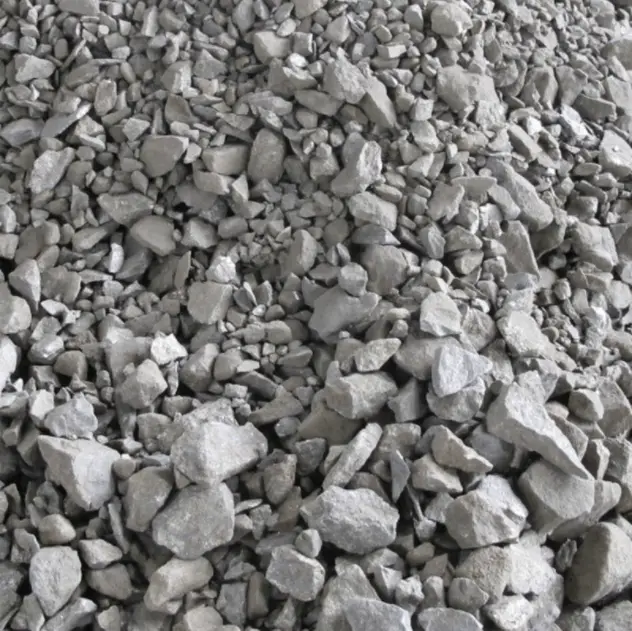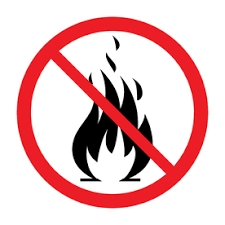Sulfur ore and sulfuric acid
Release time: 2025-07-29
I. Core Properties of Pyrite and Its Basis as a Raw Material for Sulfuric Acid
Pyrite (chemical formula: FeS₂), also known as iron pyrite, has a main composition of FeS₂ (sulfur content approximately 40%-50%) and often contains impurities such as arsenic, fluorine, lead, and zinc. Its core logic as a raw material for sulfuric acid production is: converting sulfur elements into sulfur dioxide (SO₂) through oxidation reactions, which is then processed into sulfuric acid (H₂SO₄) in subsequent steps.
II. Full-Process Application of Pyrite in Sulfuric Acid Production
The main core process of sulfuric acid production is “roasting → purification → conversion → absorption”. Pyrite is involved in all stages, as detailed below:
1. Pretreatment: Preparing for Efficient Reactions
Pyrite undergoes pretreatment to ensure sufficient roasting:
- Crushing and Screening: The raw ore is crushed into 3-5mm particles (oversized particles may burn incompletely, while undersized particles may be carried away by airflow). Screening ensures uniform particle size.
- Drying: Moisture in the ore is removed (moisture reduces roasting temperature and increases energy consumption). Typically, flue gas waste heat is used for drying until moisture content is <1%.
2. Roasting: Generating “Feed Gas” (SO₂) for Sulfuric Acid
Roasting is the critical first step in converting pyrite to sulfuric acid. Its core is oxidizing sulfur elements to SO₂ at high temperatures, with the reaction occurring in a fluidized bed furnace (modern mainstream technology).
- Reaction Principle: FeS₂ in pyrite reacts with oxygen to produce SO₂ and iron oxide (waste residue): \(4FeS₂ + 11O₂ \xlongequal{High\ Temperature} 2Fe₂O₃ + 8SO₂ + Heat\) The exothermic reaction (approximately 1670kJ/mol) maintains the furnace temperature at 850-950℃ without additional heating.
- Advantages of Fluidized Bed Furnace: Pyrite particles burn in suspension (“fluidized” state) in high-velocity airflow (air), resulting in an extremely large contact area with oxygen. The sulfur conversion rate reaches 95%-98%.
- Key Control Parameters:
- The concentration of SO₂ in furnace gas must be controlled at 10%-14% (excessively high levels cause oxygen deficiency, while excessively low levels reduce subsequent conversion efficiency).
- Temperature must be stabilized at 850-950℃ (below 800℃, the reaction is incomplete; above 1000℃, Fe₃O₄ forms, covering the ore particle surface and hindering the reaction).
3. Purification: Removing Impurities to Protect Subsequent Processes
Impurities in pyrite (arsenic, fluorine, lead, dust, etc.) enter the furnace gas (containing SO₂, O₂, N₂, water vapor, and impurities) during roasting. Untreated impurities severely affect subsequent steps:
- Arsenic (As₂O₃) and selenium (SeO₂) poison catalysts in the conversion stage.
- Fluorine (HF) corrodes equipment (e.g., glass, metals).
- Dust clogs pipelines or covers catalyst surfaces.
The purification process typically includes 3 steps:
- Dedusting: A cyclone separator + electrostatic precipitator removes over 90% of dust (particle size >1μm).
- Washing: Dilute sulfuric acid (or water) washes the furnace gas to absorb arsenic/selenium compounds (forming arsenic acid, selenic acid) and fluorides (HF→H₂SiF₆).
- Drying: Concentrated sulfuric acid (93%-98%) absorbs moisture in the furnace gas (preventing catalyst “dampness” and failure during subsequent conversion).
4. Conversion: SO₂→SO₃ (“Semi-Finished Product” of Sulfuric Acid)
Purified furnace gas (containing SO₂, O₂, N₂) enters a converter, where SO₂ is oxidized to sulfur trioxide (SO₃) under the action of a catalyst. This is the core reaction in sulfuric acid production:
- Reaction Principle: \(2SO₂ + O₂ \xrightleftharpoons[Δ] Catalyst 2SO₃ + Heat\) The reaction is reversible and exothermic. To improve conversion efficiency, a catalyst (mainly vanadium catalyst with active component V₂O₅) and temperature control (400-600℃) are used.
- Indirect Impact of Pyrite: The concentration of SO₂ generated during roasting directly affects conversion efficiency (excessively high concentrations inhibit the forward reaction). Therefore, the feed rate of pyrite and air ratio are controlled to stabilize the SO₂ concentration at 8%-10% (after purification). Combined with a “multi-stage conversion + inter-stage heat exchange” process (e.g., 3-stage or 4-stage conversion), the total conversion rate exceeds 99.5%.
5. Absorption: SO₃→H₂SO₄ (Final Product)
Direct reaction of SO₃ with water generates a large amount of acid mist (difficult to collect). Therefore, 98.3% concentrated sulfuric acid is used as the absorbent (minimizing acid mist at this concentration), with the reaction as follows: \(SO₃ + H₂O \xlongequal{} H₂SO₄\)
Absorption occurs in an “absorption tower”: 98.3% concentrated sulfuric acid is sprayed from the top of the tower, contacting upward-flowing SO₃ gas in countercurrent. After absorbing SO₃, the acid concentration increases (e.g., to 99.5%), which can be directly used as a product (concentrated sulfuric acid) or diluted to the required concentration (e.g., 93%, 50%).
- Relevance to Pyrite: Low sulfur conversion efficiency during roasting (e.g., incomplete combustion due to excessive impurities) reduces the amount of SO₂→SO₃, ultimately lowering sulfuric acid output. Thus, the grade of pyrite (sulfur content >45% for high-grade) directly affects product yield.
III. Utilization of Pyrite “By-Products”
In sulfuric acid production, pyrite not only provides a sulfur source but also its roasted waste residue can be comprehensively utilized to maximize resource efficiency:
- Ironmaking Raw Material: The main component of the residue is Fe₂O₃ (iron content ~40%-50%), which can be used as an auxiliary material for ironmaking after impurity removal via magnetic separation.
- Cement Additive: Components such as SiO₂ and Al₂O₃ in the residue can be used in cement production to reduce limestone consumption.
- Iron Oxide Pigment Production: Purified Fe₂O₃ from the residue can be used to produce iron oxide red (a pigment).


